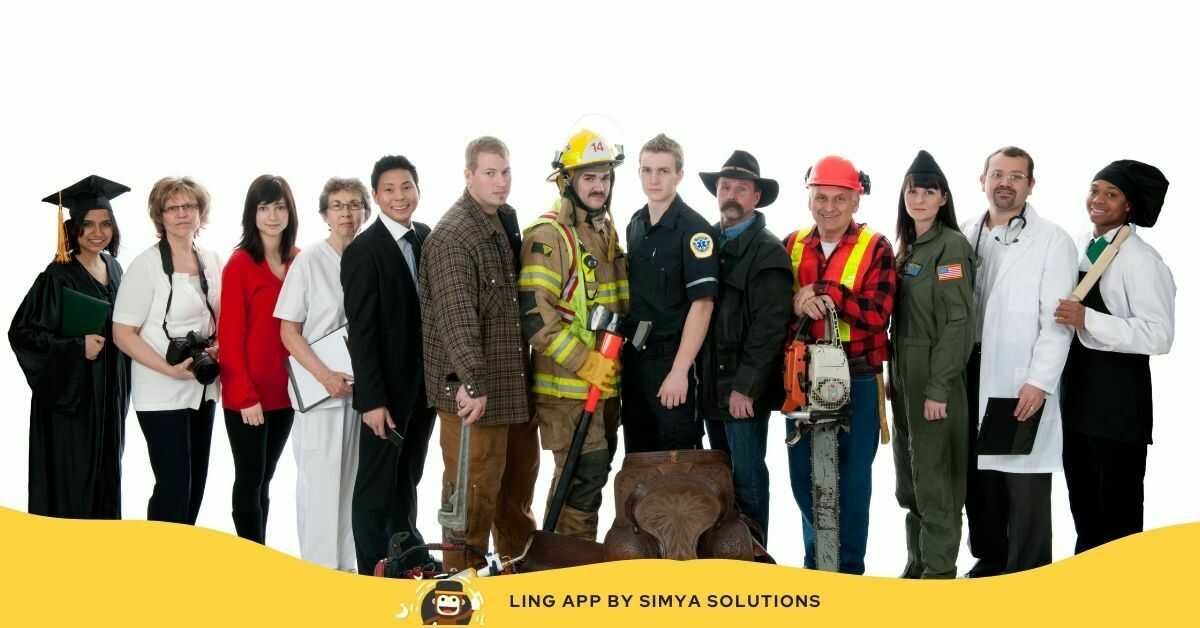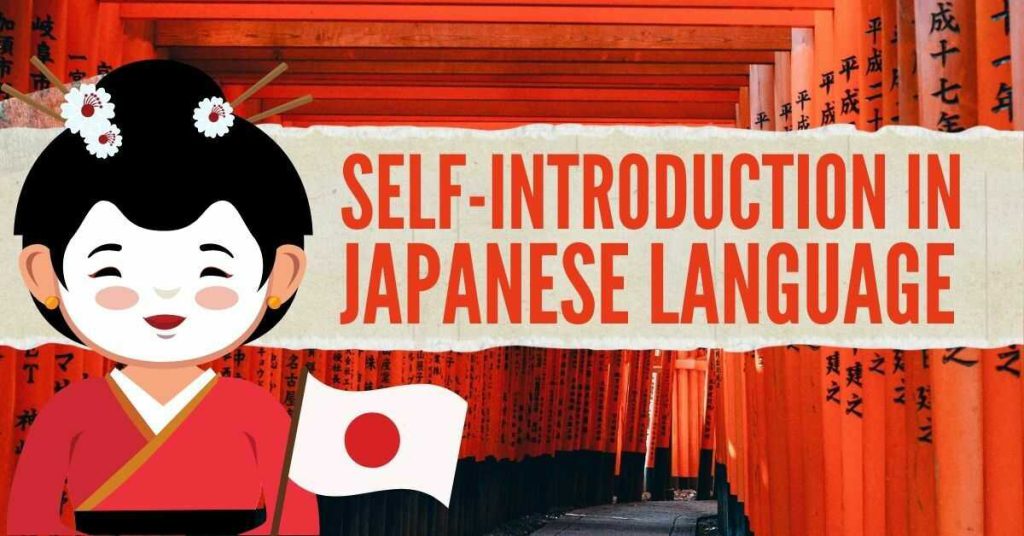と申します / 名前は (to moushimasu / namae wa) is the one of the way to sa ‘My name is…’ in Jepanese. Whether you are a student, tourist, or a new employee, learning how to introduce yourself in Japanese properly can significantly affect how the locals will treat you.
In the Japanese culture, self-introductions are called 自己紹介 (じこしょうかい) or Jikoshoukai, and they are deemed an essential step in order to establish yourself among the locals. The word jiko refers to the English word “self,” while shoukai can directly be translated to “introduction.”
In this post, we will walk you through learning Japanese and how you can prepare to introduce yourself (may it be for formal or casual encounters) so that you can connect better with the locals when the time comes.
A Few Tips Before Introducing Yourself In Japanese
Planning to go on a trip or to work in Tokyo? Whenever we meet someone for the first time, most of us merely say hello and follow it up with the name right away. If you
However, that is not the case for Japanese people as they view introductions as a form of respect, and it reflects your enthusiasm for getting to know or working side-by-side with the locals. Of course, you, as a foreigner, are not expected to be fluent in Japanese, but having some knowledge of how even the basic greetings work can earn you an extra brownie point.
Before we go on a deep dive into the basic structure that you can use, allow us to give you a few tips that you must know while introducing the Japanese people.
- To say your name in Japanese, do remember that the family name comes first, followed by the second name. This means that if your name is Kevin Smith, your introduction should start with Smith, followed by Kevin.
- It is considered polite or 丁寧 (teinei) whenever you introduce yourself if you discuss one or two of your major strengths. Never go beyond that number, as the locals may view it as a form of arrogance. Remember: Japanese people are always humble, and they even follow up their achievements with some of their flaws.
- Whenever a person asks you about your occupation or 職業 (shokugyō), you do not have to follow the Western standard where you discuss your role, company, duties, etc. In Japan, the only response they are looking for is simple, like “I work at an office, or I work for + Company Name.”
- Instead of the traditional handshake when you are done with your introductions, the Japanese standard that you have to remember is that they bow instead. Bowing or お辞儀 (ojigi ) is a form of respect for the Japanese people. According to the locals, the angles by which you bow will express the level of respect you have for the other person. As a rule of thumb, always bow at least 15 degrees and remember to put your hands in front of you (left hand on top of right hand).
- If you intend to provide your business card or 名刺 (meishi) after introducing yourself, always give it out with two hands and make sure that you are not covering any words. If you are in a business group, always give your card to the one with the highest authority first.
Now that you already have an idea of the basic etiquette when introducing yourself in Japanese, let’s now discuss the 5 basic lines that can help you crush that introduction like a pro.

Introduce Yourself In Japanese
Are you looking for a surefire way to introduce yourself to your Japanese colleagues? Aside from mastering the basic greetings in Japanese, you are expected to go beyond and completely describe who you are to the people you meet. Of course, it doesn’t always have to follow all these lines, but our list here is perfect to use if you want to sound polite for a formal and casual introduction.

Japanese Greetings
If you have a friend or colleague who will introduce you to other Japanese people, it would be wise to always start your introduction with a simple greeting such as those listed below.
- Nice to meet you – はじめまして (Hajimemashite)
- Hello – こんにちは (Konnichiwa)
- Nice to meet you, everyone! – みなさん、はじめまして! (Minasan, hajimemashite)
- Hello, everyone. Nice to meet you. – みなさん、こんにちは。はじめまして。(Minasan, kon’nichiwa. Hajimemashite)
- Good morning – おはようござい ます (Ohayōgozaimasu)
- Good evening – こんばんは (Konbanwa)
Before we dive into the rest of the vocabulary, words and phrases, you must be thinking, how do I even memorize these? If you practice daily and think like a native speaker, you will surely achieve your goals. But, you don’t have to do it alone.
Download this app on Google Play and App Store today and discover a new way to learn languages!

Stating Your Name – なまえ
Once you have stated your basic greetings, you can now move on and start to say your name in any of the ways below.
- Please call me Anna – アンナと呼んでください。 (Anna to yonde kudasai)
- My name is… – と申します / 名前は (To moushimasu / Namae wa)
- My name is Anna. – わたしの名前はアンナです。 (Watashi no namae wa Anna desu)
- My name is Michael. – マイケルといいます。 (Maikeru to īmasu)
- I am… – 私は (Watashi wa)
- I am Anna. – 私はアンナです。(Watashi wa Anna desu)
- I’m Mark. – マークです。 (Māku desu)
- The name is Mark, but everyone calls me Marky. – 名前はマークですが、みんなが私をマーキーと呼んでいます。(Namae wa māku desu ga, minna ga watashi wo mākī to yonde imasu.)
Describing Your Nationality – こくせき

Aside from stating your name, it is totally normal for people to ask where you are from or your nationality. To properly answer this, you can use any of the following expressions below.
- I come from… -から来ました (Kara kimashita)
- I live in… – 私は-に住んでいます (Watashi wa -ni sunde imasu)
- I am from America. – 私はアメリカから来ました。 (Watashi wa Amerika kara kimashita)
- I am from the United States. – 私はアメリカから来ました。 (Watashi wa Amerika kara kimashita)
- I am an Americanz. – 私はアメリカ人です。 (Watashi wa amerikajin desu)
- I am from Tokyo. – 私は東京出身です。 (Watashi wa Tokyo shusshin desu)

Sharing Information About Your Occupation – しょくぎょう
Traditionally, the Japanese have a set of words to describe every job but with today’s modern occupations, it is allowed to use Japanified terms. Japanified (also known as wasei-eigo) refers to the mixture of English terms in a sentence.
- I’m an office worker. – 私はサラリーマンです。 (Watashi wa sararīman desu)
- I’m an English teacher. – 私は英語の先生です。 (Watashi wa eigo no sensei desu)
- I am a graphic designer. – 私はグラフィックデザイナーです。 (Watashi wa gurafikkudezainaa desu)
- I am a student. – 私は学生です。(Watashi wa gakusei desu)
- I am a nurse. – 私は看護師です。 (Watashi wa kangoshi desu)
- I am an engineer. – 私はエンジニアです。(Watashi wa enjinia desu)
- I am an accountant. – 私は会計士です。 (Watashi wa kaikeishi desu)
- I work at a bank. – 私は銀行で働いています。 (Watashi wa ginkō de hataraite imasu)
- I work at a company. – 私は会社で働いています。 (Watashi wa kaisha de hataraite imasu)
- I work at a hospital. – 私は病院で働いています。 (Watashi wa byōin de hataraite imasu)

Finishing Your Self Introduction
While you can always just end with thank you in the Japanese language, you can also make use of the following classic lines below.
- Please be kind to me. – よろしく。 (Yoroshiku)
- Please treat me well. – よろしくお願いします。(Yoroshiku onegai shimasu)
- Please be kind to me. (formal) – どうぞよろしくおねがいします。 (Douzo yoroshiku onegai shimasu)
- I’m happy to meet you. – お会いできてうれしいです。 (Oaidekite ureshii desu)
- I’m very honored to meet you. – お会いできて光栄です。 (Oaidekite kouei desu)
- Nice to meet you. – どうぞよろしく。 (Douzoyoroshiku)
- Nice to meet you. (informal) – よろしくね。(Yoroshiku ne)
As we reach this part of the article, we hope that you were able to learn all the basic self-introduction lines that you can use at school, work, online, or for casual interactions. Suppose you enjoyed this post and would like to learn more about the Japanese language and culture. In that case, we highly recommend that you read out other related posts like how to greet using the Japanese language, the basic sentence structure, and how to say I love you; like a real native!
On the flip side, if you are someone who is truly passionate about Japan and would like to learn Japanese, then we’ve got a language learning resource that will definitely interest you. Read on below to find out what it is.
Learn Japanese For Free Today!
While it is true that Asian languages are indeed some of the most difficult ones to learn and say, it does not mean that it is impossible to have mastery of these! If you want to learn more vocabulary words, expressions, and grammatically correct sentences in the Japanese language, download the Ling app today!
No matter your age and occupation, the Ling app is guaranteed to make language learning fun and exciting for you, even without having to set aside a lot of time learning Japanese. In fact, just by using the app consistently for 10 minutes a day, you can start developing your skills and your confidence in speaking, reading, and writing in Japanese and over 60+ foreign languages.
Moreover, through its unique selection of built-in features, you can ensure that you’ll get not just to memorize but deeply understand the linguistic concepts of every language.







































